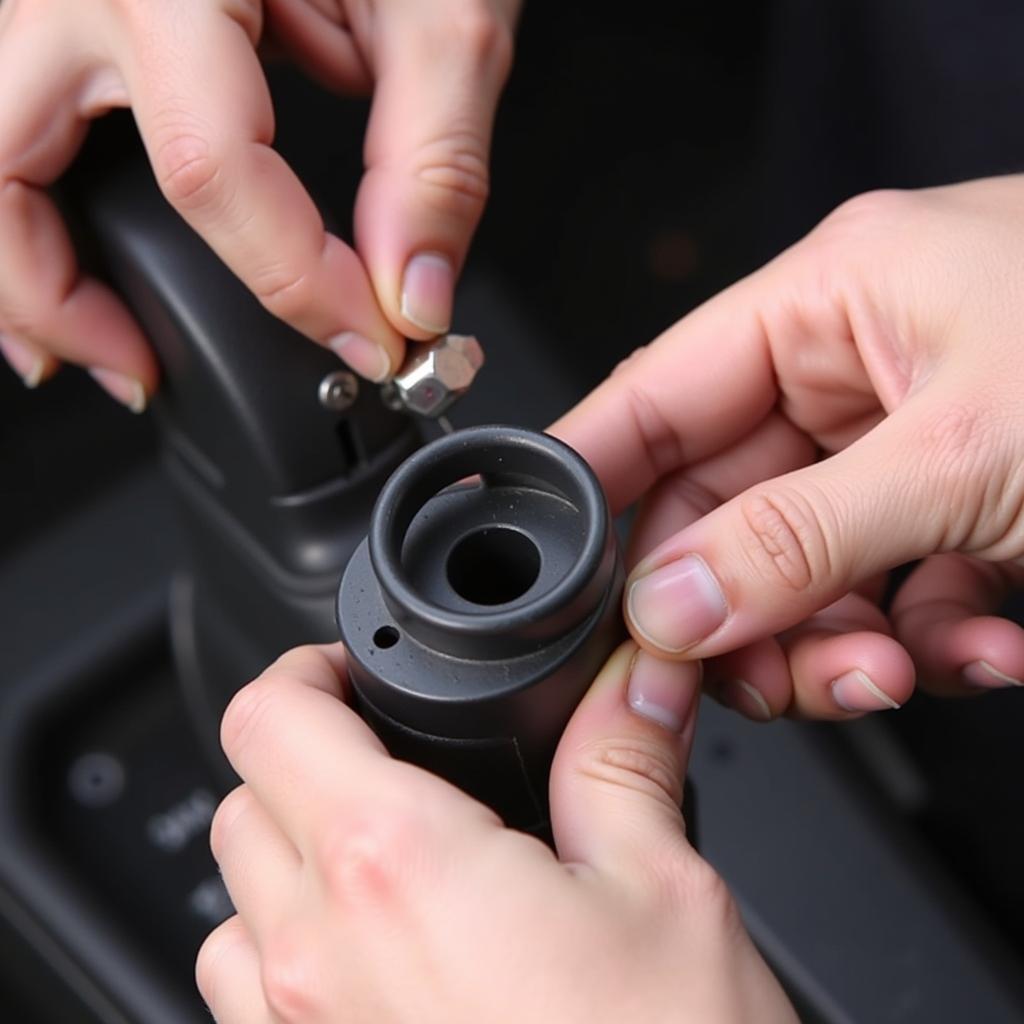If your car relies on a hand pump, whether for tire inflation or another function, knowing how to fix it is crucial. This article will guide you through diagnosing and resolving common issues with your car hand pump, empowering you to handle these problems confidently and efficiently.
 Car Hand Pump for Tire Inflation
Car Hand Pump for Tire Inflation
A hand pump is a simple but essential tool, and understanding its mechanics is the first step in troubleshooting. Common problems include air leaks, a broken gauge, or a damaged piston. Don’t let a faulty hand pump leave you stranded. Let’s dive into the solutions!
Diagnosing the Problem with Your Car Hand Pump
Before you start fixing your hand pump, you need to pinpoint the issue. Is it leaking air? Is the gauge not working? Does the pump feel stiff or difficult to use? Answering these questions will help you narrow down the problem and find the right solution. If you’re unsure where the problem lies, a systematic check can help. Start with the most common issues and work your way through. Sometimes, the problem isn’t with the pump itself but with the connection to the tire valve.
Checking for Air Leaks
A common problem with hand pumps is air leaks. To check for leaks, listen for a hissing sound while pumping. You can also apply soapy water to the pump’s connections and look for bubbles. If you see bubbles, you’ve found your leak. Sometimes a simple tightening of the connections is all you need.
 Checking Car Hand Pump for Air Leaks
Checking Car Hand Pump for Air Leaks
How to Fix Common Car Hand Pump Issues
Now that you’ve identified the problem, let’s get to fixing it. Here’s a step-by-step guide to resolving some common car hand pump issues.
- Tighten Connections: Ensure all connections, including the hose and valve attachments, are securely tightened. This often resolves minor air leaks.
- Replace the O-ring: A worn or damaged O-ring is a common cause of leaks. Replacing it is a simple and inexpensive fix. You can find replacement O-rings at most auto parts stores. If you’re dealing with a gas leak, however, you might want to check out how to fix a car gas line leak.
- Lubricate the Piston: A stiff pump might just need some lubrication. Apply a small amount of silicone-based lubricant to the piston to restore smooth operation.
- Replace the Gauge: If your gauge is inaccurate or broken, you’ll need to replace it. This is usually a straightforward process, but you may need to consult the manufacturer’s instructions. If you’re having broader car issues, you may find can a car be fixed after water damage helpful.
 Replacing Car Hand Pump O-ring
Replacing Car Hand Pump O-ring
“A well-maintained hand pump can last for years,” says automotive expert, Michael Stevenson. “Regular checks and simple maintenance can prevent many common problems.”
Conclusion
Fixing a car hand pump is often a simple DIY task. By understanding the common problems and following the steps outlined above, you can get your hand pump back in working order in no time. If you’re facing other car issues, knowing how to fix an oil light in car can be invaluable. Don’t hesitate to contact us at AutoTipPro at +1 (641) 206-8880 or visit our office at 500 N St Mary’s St, San Antonio, TX 78205, United States if you need further assistance. We are always happy to help!
“Prevention is key,” adds Sarah Johnson, another experienced mechanic. “Keeping your hand pump clean and stored properly can extend its lifespan significantly.” You might also be interested in how much to get water pump in car fixed for related car maintenance costs. Alternatively, how to fix a car engine leak might offer solutions to other car problems you may be facing.







Leave a Reply